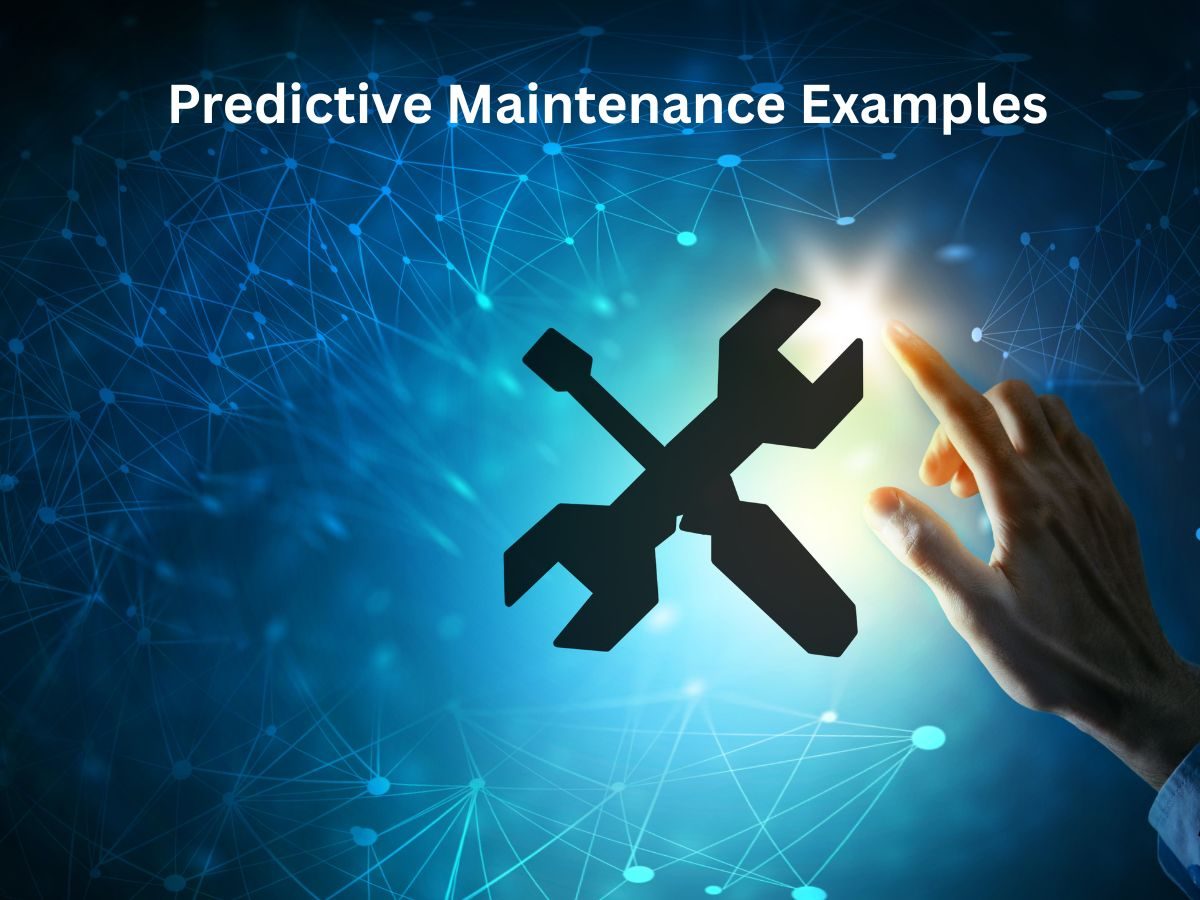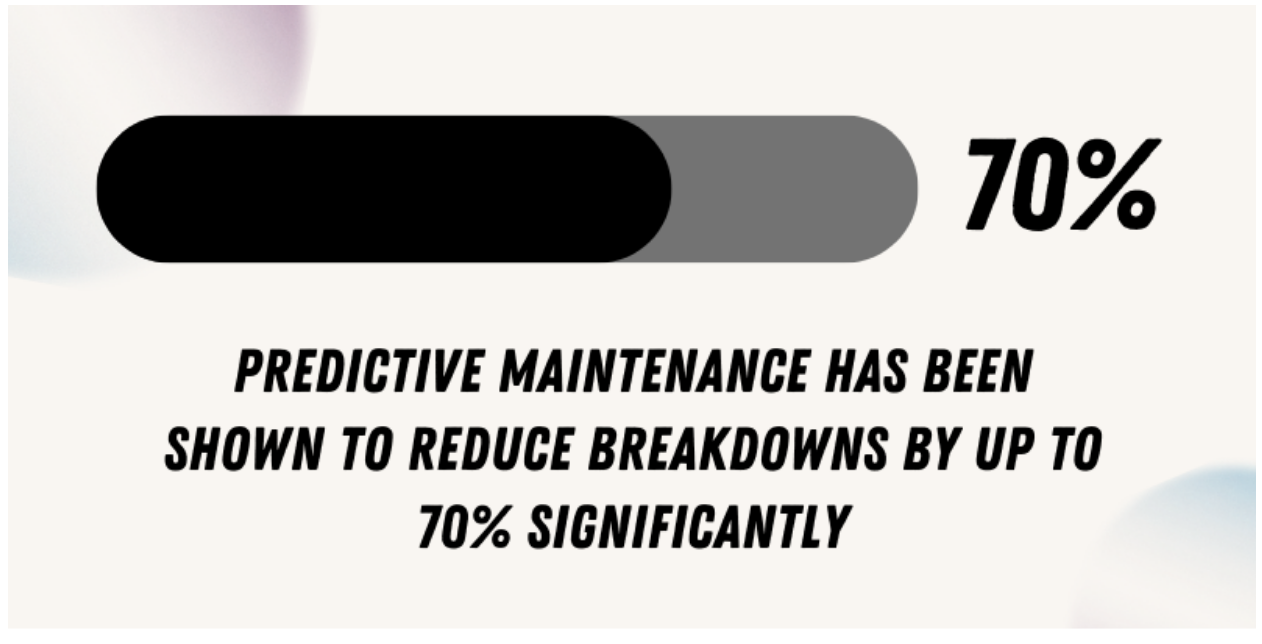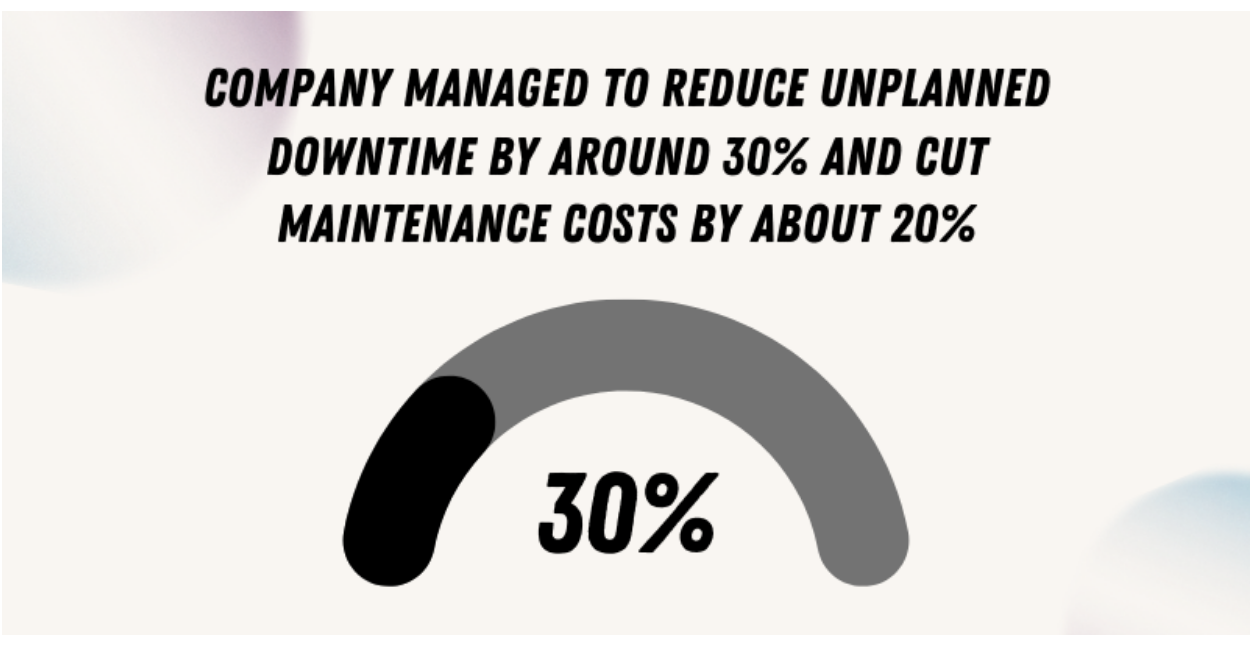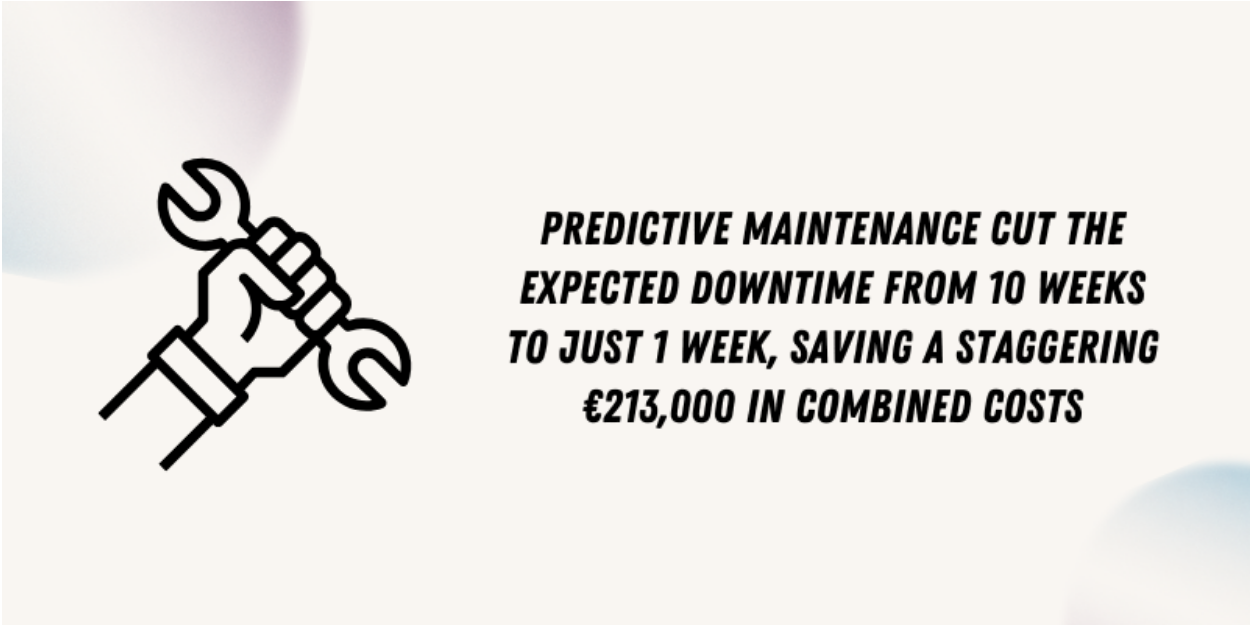Real-World Predictive Maintenance Examples That Actually Work
Discover predictive maintenance examples that cut downtime, save costs, and boost efficiency. Learn how top companies use them to stay ahead.
In this article:
- Key Takeaways: Predictive Maintenance Examples
- Quick Recap: What Is Predictive Maintenance?
- Predictive Maintenance Examples in Action
- Example 1: Manufacturing
- Example 2: Airlines
- Example 3: Logistics & Fleet Management
- Example 4: Energy Sector
- Example 5: Healthcare
- Example 6: Agriculture
- Common Predictive Maintenance Mistakes You Should Avoid
- 1. Collecting Too Much Irrelevant Data
- 2. Failing To Integrate Predictive Systems Into Workflow
- 3. Ignoring Predictive Alerts
- 4. Not Training Staff Properly
- Put Predictive Maintenance Examples Into Action

Ever wish you could fix problems before they even happen?
That’s exactly what predictive maintenance makes possible. However, many people are unaware of how to implement it in their daily operations.
To make this a little easier, we’ll explore some predictive maintenance examples that are used every day in real companies across the world. Imagine catching a machine problem days before it stops production.
If you’re on board, let’s get started.
Key Takeaways: Predictive Maintenance Examples
- Manufacturing: Use IoT sensors to track vibration and temperature. Start small with your most critical machines to cut downtime and repair costs.
- Logistics & Fleet: Add sensors for tire pressure, fuel use, and brakes. A mobile dashboard helps you schedule maintenance before costly breakdowns.
- Healthcare: Connect diagnostic machines (MRI, ventilators) to predictive tools. Alerts help you act before patients are affected by equipment failures.
- Agriculture: Install sensors on tractors and harvesters to collect vibration and engine data. Use apps to get alerts and plan fixes during off-peak hours.
Quick Recap: What Is Predictive Maintenance?

Source: NRI
Predictive maintenance is the practice of using data, sensors, and analytics to predict when equipment will fail, so you can fix it before it actually breaks down. Instead of waiting for a machine to stop working, predictive maintenance tells you the right time to act.
Why does this matter? Because unexpected breakdowns are expensive. They cost money, time, and even trust from customers.
In fact, predictive maintenance has been shown to reduce breakdowns by up to 70%. That’s a big win for a business manager who’s trying to cut unnecessary spending.
Predictive Maintenance Examples in Action
You don’t need a crystal ball to prevent machine failures; you just need the right sensors and smart data. Predictive maintenance turns mystery breakdowns into early warnings, so you fix things before they fail.
Here are some predictive maintenance examples to show how it works like magic:
Example 1: Manufacturing
In the manufacturing world, even a minute of downtime can cost thousands of dollars. This is precisely why Siemens turned to IoT sensors that continuously monitor temperature, pressure, and vibration. The data feeds into machine learning systems that spot tiny anomalies before they become costly shutdowns.
In one implementation, the company successfully reduced unplanned downtime by approximately 30% and reduced maintenance costs by around 20%.
How to Implement
Start with a few critical machines, install basic sensors, and connect a simple equipment maintenance software. Even if your setup runs in phases, you’re already avoiding expensive breakdowns and regaining time for your team.

Source: Preprints
Example 2: Airlines
Delta Air Lines revolutionized aircraft upkeep with its APEX (Advanced Predictive Engine) system. This AI-powered system continuously monitors engine data in real-time, tracking temperature, pressure, and performance during every flight.
The result is a reduction in maintenance-related cancellations from around 5,600 to just 55 per year, achieving an eight-figure annual savings. That’s a 99% drop.
How to Implement
Log simple sensor data, such as temperature levels, vibration, or engine RPM, for your fleet or vehicles. Then use a basic analytics tool or cloud dashboard to spot trends: does a spike in temperature correlate with failures?
If yes, set up alerts and pre-schedule checkups. Over time, upgrade to a more intelligent system that tracks equipment in real time. Even modest steps using your existing data can dramatically reduce unexpected failures.
Example 3: Logistics & Fleet Management
Delivery trucks and logistics fleets thrive or fail based on uptime. Companies like UPS and DHL now utilize predictive asset maintenance tools to monitor tire condition, brake health, engine temperature, and fuel efficiency across their fleets of vehicles.
By analyzing sensor data and trends, they’re able to flag issues early, such as engine overheating or uneven tire wear.
How to Implement
First, equip your most critical vehicles with basic sensors that track key metrics, such as engine temperature and tire pressure. Use fleet management software to monitor those signals. If temperature or pressure spikes unexpectedly, your teams get notified immediately.
Instead of waiting for a failure, schedule maintenance proactively. Then, swap a worn brake pad or rebalance a tire while it’s still safe and affordable. As your team gains confidence, roll out sensors across more vehicles and monitor additional data points.
Example 4: Energy Sector
In the energy sector, wind farms can’t afford long outages, especially offshore, where access is expensive. That’s why Acoem stepped up with a predictive maintenance solution that monitored vibration, wind speed, pitch, and power output on a 2.3 MW wind turbine.
By detecting a faulty gearbox and generator bearing early, they scheduled repairs during routine maintenance. This approach cut the expected downtime from 10 weeks to just 1 week, saving a staggering €213,000 in combined costs.
How to Implement
Most wind or energy systems already collect key metrics, such as vibration, temperature, and power output. This is where you partner with a condition-monitoring tool, such as Acoem, or a local provider to analyze data and identify early warning signs.
Don’t forget to plan fixes proactively. It could be a repair or a service that can be done during scheduled downtime, not in emergencies. Ultimately, track your results to identify areas where you can save costs and enhance production.

Source: Acoem
Example 5: Healthcare
Medical equipment downtime is more than an inconvenience; it can put patients’ lives at risk. That’s why predictive maintenance has become critical in healthcare. Philips Healthcare has developed predictive analytics tools that monitor MRI machines, CT scanners, and ventilators in real time.
These systems analyze sensor data to detect early warning signs, such as irregular power use, cooling issues, or part fatigue. A Frost & Sullivan report (2020) highlighted that predictive maintenance can reduce unplanned downtime of critical medical equipment by up to 30-40%.
How to Implement
Start by connecting your diagnostic machines to a monitoring system that collects operational data. Work with vendors like Philips or GE Healthcare that already bundle predictive software with their equipment.
If you’re running a smaller clinic, you can even use third-party IoT monitoring solutions or healthcare management solutions that integrate with existing devices. The key is setting up alerts, so your technicians are notified before a machine goes offline.
Example 6: Agriculture
John Deere has transformed its equipment by embedding IoT sensors into tractors. These sensors track performance metrics, such as engine temperature, vibration, and usage patterns, in real-time. Farmers receive alerts on their smartphones when something appears to be off.
This allows them to act before it becomes a breakdown. As a result, downtime dropped by 25%, and maintenance costs fell by 30%.
How to Implement
Add basic sensors to necessary machinery, especially tractors or harvesters, to monitor engine temperature, vibration, or RPM. Employ a dashboard or app that notifies you immediately when readings cross risk thresholds.
You also need a proactive maintenance schedule. If any of your tractors display early warnings, you can address the issue during off-peak hours rather than waiting for failure.
Common Predictive Maintenance Mistakes You Should Avoid
When it comes to predictive maintenance, a few common mistakes can turn a powerful system into just another unused tool.
Let’s look at the biggest pitfalls and how you can avoid them.
1. Collecting Too Much Irrelevant Data
More data isn’t always better. If you’re tracking hundreds of metrics that don’t connect to your actual asset maintenance goals, you’ll end up overwhelmed. Focus only on the key signals that matter most. It includes vibration for motors or temperature for engines. This keeps your system clear and actionable.
2. Failing To Integrate Predictive Systems Into Workflow
Installing sensors and analytics tools is just the first step. If your predictive system doesn’t connect with your existing maintenance schedules or work order software, the insights won’t translate into action. Make sure alerts are integrated directly into the tools your team already uses every day.
3. Ignoring Predictive Alerts
One of the most common mistakes is simply ignoring the warnings. If the system says “this pump is showing signs of failure,” but no one follows up, you’ll end up with the same breakdowns you were trying to avoid. Don't take alerts for granted; investigate them promptly before they cause major breakdowns.
4. Not Training Staff Properly
If your staff doesn’t understand how to interpret the alerts or use the dashboards, adoption will fail. Invest in simple training, so your team feels confident, not confused. A little guidance goes a long way toward success.
Put Predictive Maintenance Examples Into Action
The predictive maintenance examples we explored proved that these approaches work, and you can use them to boost your operations. Whether it’s airlines preventing delays, factories reducing downtime, or hospitals keeping critical machines online, the results speak for themselves.
You don’t need to overhaul everything overnight. Start small. Select one machine or process, gather the necessary data, and test how predictive maintenance works for your specific application.
Every little step adds up to better performance, lower costs, and fewer surprises down the road!
Frequently Asked Questions
-
No. While sensors are key, other data sources, such as machine logs, maintenance history, and even operator notes, also play a role. Combining multiple sources gives a more accurate prediction of when something might fail.
-
You don’t need years of data to get started. A few weeks of sensor readings or historical logs can be enough to spot trends. The key is collecting the correct data linked to failures, not overwhelming yourself with every possible metric.
-
Preventive maintenance follows a fixed schedule, such as changing oil every six months. On the other hand, predictive maintenance utilizes real-time data, such as vibration or temperature readings, to signal when equipment actually requires service. This saves money and prevents unnecessary downtime.
